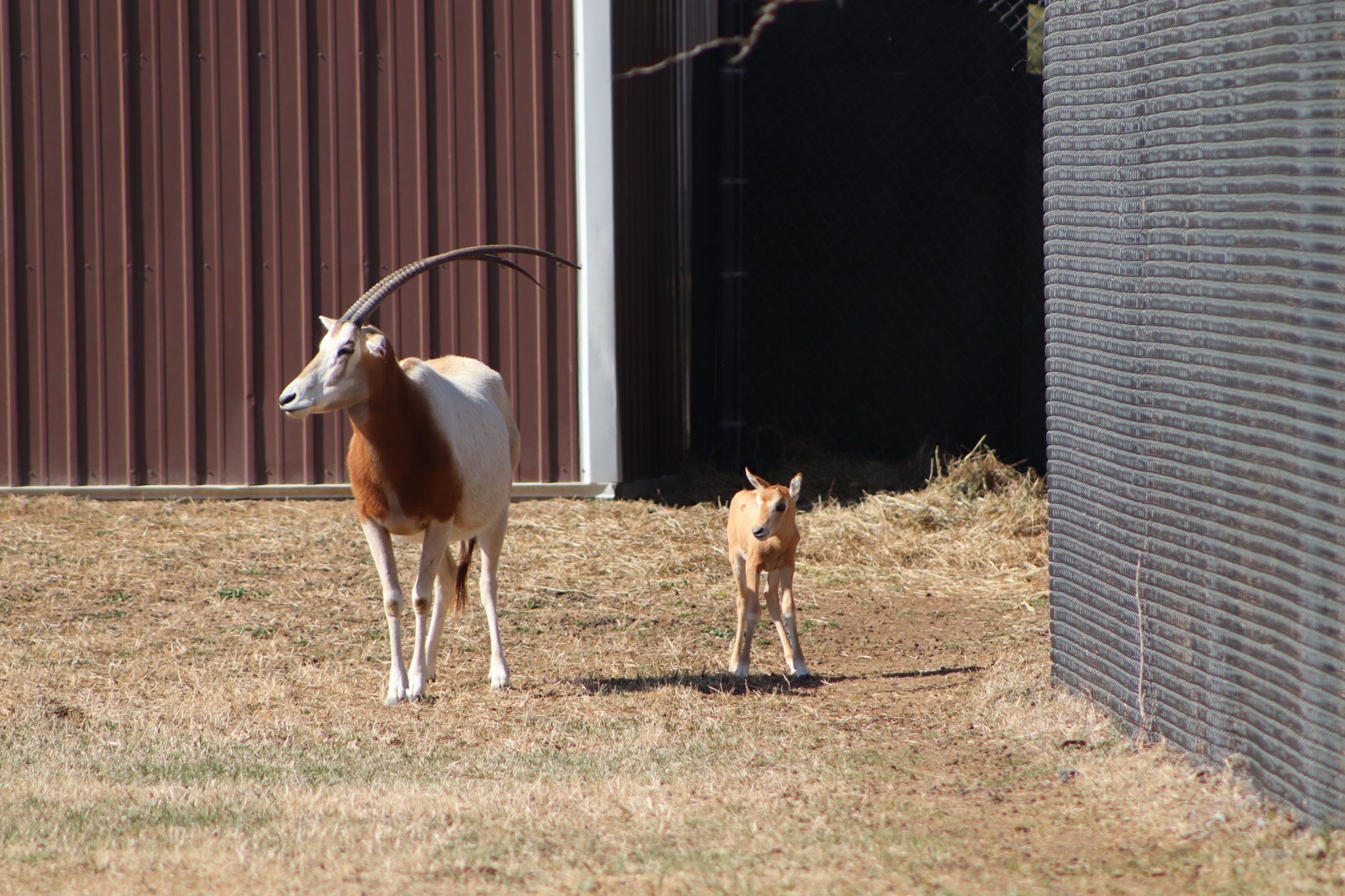Rolling Hills Zoo is welcoming a new addition to its animal family.
According to the zoo, a male scimitar-horned oryx calf was born on February 24th. The calf, weighing 16 lbs. 28 oz. at birth, was born to Seska, one of two female scimitar-horned oryx who were transferred from Fossil Rim Wildlife Center, Glen Rose, Texas.
Seska and Lucy, 2 year old females, were transferred to Rolling Hills Zoo as part of the Scimitar-horned Oryx Species Survival Plan (SSP) of the Association of Zoos & Aquariums (AZA), of which Rolling Hills Zoo is an accredited member. Rolling Hills Zoo’s animal care team knew there was a possibility that Seska might be pregnant upon arrival. Sire to the calf was a six year old male that remains at Fossil Rim Wildlife Center where the oryx are kept in a herd setting.
This is the first oryx birth at RHZ.
At birth, the calf initially required a little extra care from our animal care team, but was soon back with his mother and is doing well as he explored his new surroundings. He can often be seen doing “zoomies” around the oryx habitat, but typically stays away from mom curled up in the sun when not nursing, mimicking behavior in the wild to evade predators.
“It was interesting to watch Seska teach him to stay out of sight”, commented Brenda Gunder, RHZ Curator. “At first she seemed like an inexperienced mother just pushing him away. He quickly fell into a routine of hiding for several hours between nursing opportunities.”
With only 214 animals in the SSP oryx population, Rolling Hills Zoo is one of only 18 AZA facilities to hold this endangered species, and the only zoo in Kansas.
A century ago, hundreds of thousands of these desert-adapted antelopes were known to span across the arid ecosystems of Morocco, Tunisia, Algeria, Libya, Egypt, Mauritania, Mali, Niger, Chad and Sudan. But due to human encroachment, unregulated hunting, prolonged drought and loss of food because of excessive livestock grazing, the population numbers began to rapidly decline. The last known photo of oryx taken in the wild was in Niger in 1980.
While unconfirmed reports stated that a few wild oryx remained in the wilderness of Chad in 1996, no definite evidence of any survival was ever obtained. So in 2000 the scimitar-horned oryx was declared extinct in the wild.
Rolling Hills Zoo has been a supporter of the Sahara Conservation Fund which supports a scimitar-horned oryx reintroduction program in Chad. The reintroduction program began in 2016 as a joint initiative of the Government of Chad and the Environment Agency – Abu Dhabi.
The goal of the reintroduction program is to build up a viable, free-ranging and self-sustaining population of at least 500 animals.
To date, more than 150 captive-bred scimitar-horned oryx have been returned to the wild in Chad’s Ouadi Rimé-Ouadi Achim Game Reserve. If it were not for private collections and zoos, like Rolling Hills Zoo, the scimitar-horned oryx would have completely disappeared.



